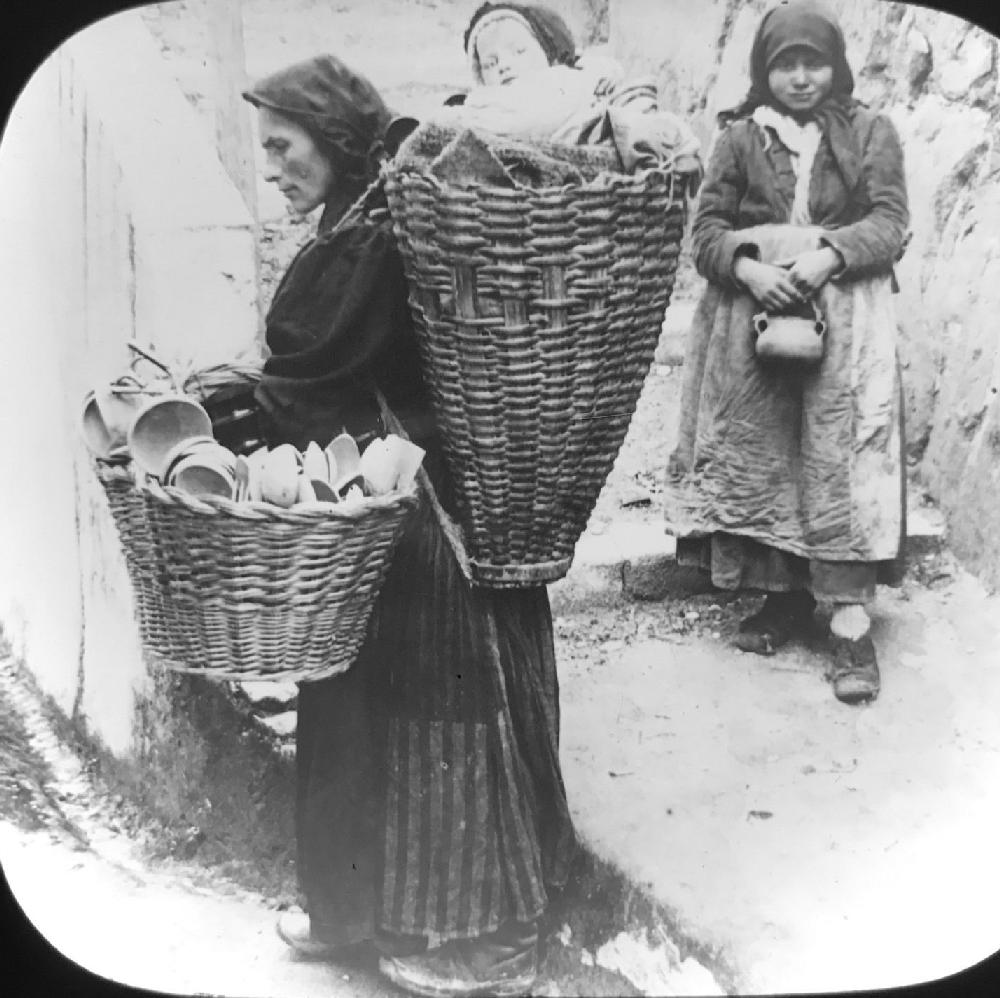
Figure 1.--This magic lantern glass slide shows a French peasant woman and children at the turn-of-the 20th century. Notice the baby in the basket. The woman seems to be selling woodent spoons she has made and can be seen in the other basket. |

|
There was still a substantial peasant population in the early-20th century. This was not the case in Britain. The difference was the status of people in rural areas and the size of their free holdings.
We note a lot of attention to the peasantry in the 18th century in connection with the French Revolution. There is much attention to the peasantry in the early-20th century even though it was still a substantil part of the French population. The interesting aspect of the French peasantry is how conservative they became once they owned their land. Land ownership was the key. (It is this conservatism that was a factor on Stalin's assalt on the Soviet peasantry, especially the Ukranian peasantry.) The French peasantry numbers began to decline perceptively after World War I as France became an increasingly urbanized and industrialized country. A notable development durung the inter-War era was the appearance of a militant anti-republican, authoritarian, and corporatist peasant movement rather comparable to Fascist urban movements. The movement was led by Henri Dorgeres, who began in Brittany as a journalist for a farmers' newspaper. His influence was strongest in northern and western France. Peasants there were more conservative than in the south. Dorgeres 'greenshirts' were vocal participants in anti-Government demonstrations (1930s). Dorgeres desired to restore the peasantry as a political force. An important factor here was agricultural recession in the 1930s in the wake of the world-wude Great Depression. Dorgeres after the Germann invasion supported Vichy, but for some reason never gained much influence there. [Paxton] France's rural population is now a small part of the overall population and is no longer called a peasant population. A cobination of television ans improved communication and transport has integrated the rural and urban population. This of course was a process unfolding all over Eueope.
Paxton, Robert O. French Peasant Fascism: Henry Dorgeres's Greenshirts and the Crises of French Agriculture, 1929-1939. Paxton is the author of a senminal work on Vichy, detailing collaboration with the NAZIs.
Navigate the Boys' Historical Clothing Web Site:
[Return to the Main French peasantry page]
[Return to the Main French history page]
[Return to the Main peasant revolt page]
[Return to the Main French democraphics page]
[About Us]
[Introduction]
[Biographies]
[Chronology]
[Climatology]
[Clothing]
[Disease and Health]
[Economics]
[Freedom]
[Geography]
[History]
[Human Nature]
[Ideology]
[Law]
[Nationalism]
[Presidents]
[Religion]
[Royalty]
[Science]
[Social Class]
[Bibliographies]
[Contributions]
[FAQs]
[Glossaries]
[Images]
[Links]
[Registration]
[Tools]
[Children in History Home]
Navigate the Boys' Historical Clothing French pages:
[Return to the Main French chronology page]
[Return to the Main French page]
[French choirs]
[French school uniforms]
[French school smocks]
[French royalty]
[French sailor suits]
[French youth group uniforms]
[Difficult French images]
[French art]
[French ethnics]
[French catalogs]
[French post cards]
